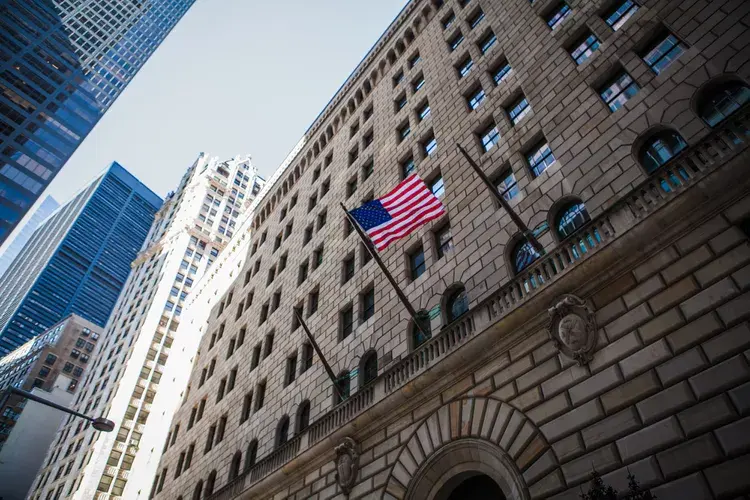Weekly Market Report - October 14, 2022
- Norman Bobrow

- Oct 14, 2022
- 6 min read
***
Analysts Expect Institutions with High Levels of Business Real Estate Lending to Be Examined
Federal regulators told all U.S. banks this summer they would be keeping a close eye on commercial real estate loan portfolios through the end of 2022. But some financial institutions can expect to be in the crosshairs of some regulators more than others, analysts say. Banks with the highest concentrations of commercial property loans should expect examiners to dig deep when inspecting their upcoming quarterly reports.
Examiners plan to focus on newly issued commercial real estate loans and those in the riskiest categories such as office, retail, and hospitality, as well as loans with payments vulnerable to rising rates, according to a report from Janney Montgomery Scott, a Philadelphia-based investment bank. Banks with loans in cities with relatively distressed office markets, such as Houston, Dallas and San Francisco, should also expect more attention from examiners, Tim Coffey, an analyst at Janney Montgomery Scott, told CoStar News.
The vacancy rate in Houston’s office market is 19%, according to CoStar data. Dallas-Fort Worth's vacancy rate is 17.3% and San Francisco’s rate is 15.7%. All are higher than their pre-COVID vacancy rates. Banks that are publicly traded will start reporting third-quarter earnings later this month as all 4,000-plus banks in the United States, whether public or privately held, begin filing their quarterly reports with regulators. Some of the largest U.S. banks by assets are first up to report, with JPMorgan Chase and Wells Fargo scheduled to issue third-quarter earnings on Friday.
***
(National Association of Realtors)
After the strong rebound for the U.S. economy in 2021, growth in 2022 has slowed in the face of rising inflation, the household income squeeze, and geopolitical events. While the economy continues to deal with elevated inflation, data shows a slowdown in the growth of commercial real estate. Demand for apartments and office spaces is lower compared to previous quarters. The office sector continues to struggle amid hybrid work conditions. As the country navigates hybrid work, the office sector continues to struggle.
In Q3 2022, about 1.34 million more square feet of office space was vacant and placed on the market than were leased. Although more people returned to their offices, after four quarters with positive net absorption, demand for office space dropped as net absorption turned negative again. As a result, the market's net demand for office spaces decreased relative to supply, and the vacancy rate rose to 12.4% in Q3 2022 from 12.3% in the previous quarter. Meanwhile, the office sector has the highest vacancy rate across all sectors of the commercial real estate market.
***
Top 10 High Performers by Sector / Vacancy Rate + 12-month Rent Growth


***
The rise of remote work will hurt older buildings, leaving landlords in the lurch
In the heart of midtown Manhattan lies a multibillion-dollar problem for building owners, the city, and thousands of workers. Blocks of decades-old office towers sit partially empty, in an awkward position: too outdated to attract tenants seeking the latest amenities, too new to be demolished or converted for another purpose. It’s a situation playing out around the globe as employers adapt to flexible work after the Covid-19 pandemic and rethink how much space they need. Even as people are increasingly called back to offices for at least some of the week, vacancy rates have soared in cities from Hong Kong to London and Toronto. In some cases, companies are simply cutting back on space to reduce their real estate costs. Others are relocating to shiny new towers with top-of-the-line amenities to attract talent and employees who may be reluctant to leave the comforts of working from home. Left behind are older buildings outside of prime locations.
The US is likely to have a slower office-market recovery than Asia and Europe because it began the pandemic with a higher vacancy rate, and long-term demand is expected to drop around 10% or more, Barkham said. New York, America’s biggest office real estate market, is at the center of the issue. A study this year by professors at Columbia University and New York University estimated that lower tenant demand because of remote work may cut 28%, or $456 billion, off the value of offices across the US. About 10% of that would be in New York City alone.
The implications of obsolete buildings stretch across the local economy. Empty offices have led to a cascade of shuttered restaurants and other street-level businesses that depended on daytime worker traffic. And falling building values mean less property-tax revenue for city coffers.

***
15th annual Allen Matkins View from the Top
The annual Allen Matkins View From the Top brings together the top real estate economists, owners, investors, developers and brokers in Western Region commercial real estate. Now in its 15th year, View From the Top remains a key source for market trends and predictions. Here are the top takeaways from this year’s CRE brain trust: Tailwinds Are Stronger Than Headwinds for Capital Markets Going into the Next Pricing Cycle. According to Michael Van Konynenburg, president of Eastdil Secured, although capital markets have been choppy, the positives outweigh the negatives in today’s environment. With increasing replacement costs, growing rents, a very strong job market, strong balance sheets, limited overleverage and high liquidity ($4.1 trillion on deposit at the Fed), commercial real estate is well positioned for strong momentum in the second half of the year. […]
Return to Work Is Not Going Away.
There are a number of unanticipated challenges impacting commercial real estate firms right along with the rest of the country, including the war in Ukraine, inflation, rising rates and the prospect of a recession, but the work from home syndrome is still top of mind for most CEOs. […] Reimagined Office Space Is the Magic Sauce. While the retail and residential sectors are making a strong comeback, Kilroy Realty Corporation’s CEO John Kilroy sees commercial real estate developers acting more cautiously. “For people to make decisions and be aggressive, they need to have confidence and right now, there aren’t a lot of places to feel confident.” With inflation, an inconsistent tax system and so much political rancor, there isn’t a lot of stability to be found.
***
Office valuations in New York City are forecasted to decline by as much as 39% by 2029 due to remote work trends, according to a recent report from professors at the NYU Stern School of Business and Columbia University Business School. That plunge represents a $453 billion valuation drop for New York City office buildings, while similar declines could occur in other U.S. cities, the report noted. What the authors call an “office real estate apocalypse” also will have negative implications for nearby businesses and local public finances. The authors said that lower quality, less expensive office buildings will experience much more volatile swings in valuation, while higher quality office buildings are somewhat buffered against the downward trend.
***
Commercial 'apocalypse' now – and worse is yet to come, apparently
The surge in remote work, and a decline in demand for office space, during the COVID-19 pandemic has apparently wiped an estimated $453 billion off commercial real-estate value. That's not good news for investors and pension funds relying on the value of these buildings. The US National Bureau of Economic Research (NBER) – a nonprofit, non-government org – came up with the figure, and is predicting what it calls an "office real estate apocalypse." While it focused its work on New York City, data from 105 office markets throughout America between 2000 and 2022 was included in a report this fall. Prior to the coronavirus outbreak, 95 percent of office space was occupied in the US, according to the bureau.
By the end of March 2020, occupancy dropped to 10 percent, it said. As of only a couple weeks ago, the NBER said office occupancy is still only at 47 percent. Around the US, that resulted in a 17.5 percent decrease in lease revenue between January 2020, and May 2022, and not only because fewer offices were being occupied, but also because those that are being rented are going for shorter terms, lower prices per month, and a lot less floor space is needed as staff are told they can work from home for most or all the week.









Comments